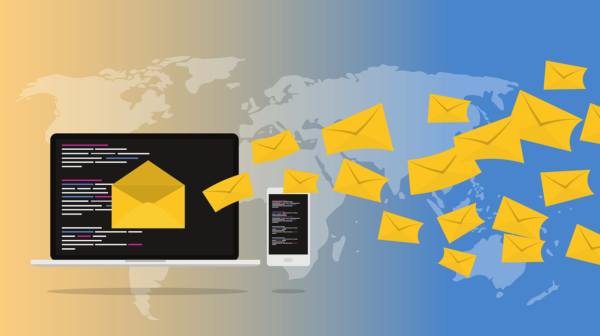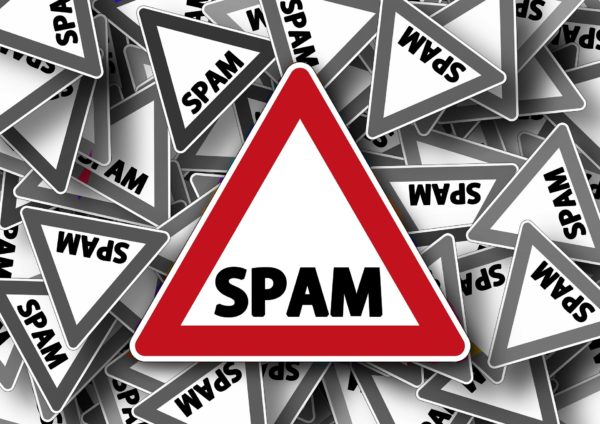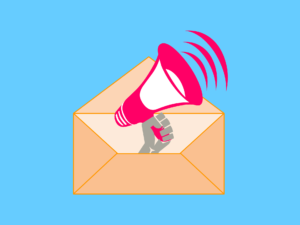Four Ways To Use Tags To Manage Your Email List

Managing your email list is an important aspect of email marketing. There are several ways to manage your email list and one of those is using tags. Subscribers to your mailing list can be provided with many tags as are needed. This allows you to refine marketing campaigns and build profits.
Some of the ways you can use tags to manage your email list include:
1. Distinguish Position In The Sales Process
One way that you can use tags is to distinguish where subscribers are on your sales process. For instance, are they pre-sale, recent sale or regular customer. This can make a big difference because you want to send pre-sale customers completely different content to those who are regular customers.
At the same time, you could adjust this to include products that the customer has bought in the past. This allows you to create content that is specifically designed to create cross selling opportunities without advertising irrelevant or the same products to audiences. This can mean you aren’t losing subscribers who unsubscribe because you aren’t offering them the best content.
Also, it can help to improve your campaign’s key metrics including open rates, click through rates and conversions.
2. Distinguish Important Demographics
Another key feature that you might want to identify is important demographics that are related to your marketing. For instance, if you own a kids clothing brand, you might want to add tags like mother, father, the kids ages, the kids’ genders, etc.. This will give you key indicators on what content to send subscribers.
So, for instance, if you have a special deal on t-shirts for girls to celebrate mother’s day, you could send this message to fathers who have girls. If you only have items that are for children under six years, you can specify this.
With enough tags you can really be specific with the subscribers who get the campaigns and ensure that they are sent correctly.
3. Identify Subscriber Special Events
A more complex tag set to use is to add tags that identify specific special days for your subscribers. For instance, you could add tags to identify their birthday, wedding anniversary or other important dates. You can then use these to send key reminders to treat themselves or buy a present for a special someone.
This is the hardest tag set to use for two reasons:
a. You need a larger number of tags to distinguish between different groups. If you did just anniversary and birthday, you would also need twenty four different tags (12 for anniversary and 12 for birthday).
b. You need to be consistent with the tag writing. For instance, you need to ensure that they all follow the same format like birthday-june. This prevents you from using the wrong tag system when creating campaigns and missing some important campaigns.
4. Identify Old Subscribers/Key Subscribers
Another way to use tags is to identify users who are no longer responding to emails or are key subscribers (they share content, always purchase). You need to be sending these groups special content to re-engage or reward them for their loyalty to your brand.
This can be a key set of tags because you should be regularly cutting out those who are labelled as old subscribers (or inactive). And those who are very active can actually help you drive sales by showcasing the rewards they get.
Conclusion
Tags are an important part of managing your email campaigns. They help you to identify who should receive specific campaigns and make sure that subscribers aren’t getting content that is going to turn them away from your brand.
How do you use tags in your email campaign? How often do you manage those tags?
Let us know in the comments below.
Read post Post a Comment. Tagged in: email marketing strategy, email subscribers, tags
The Best Email Marketing Tips For Small Business In 2019

Email marketing is by far one of the best ways to market your business. Year-on-year, email marketing has been rated as one of the best marketing platforms for ROI. It is simple to use, acceptable to consumers and can reach numerous customers long after you’ve sent your email.
However, many small businesses often struggle to use email marketing because, on the first few campaigns, many don’t see the returns they expect. However, email marketing success is dependent on the best practices. There are numerous tips that can help with this. So, here are our top tips for a successful email marketing campaign.
1. Segment Your Email Marketing List
The first thing you should be doing is to segment your email marketing list. Not everyone on your list is going to want the same content. Some will be interested in different products or have differing problems. Therefore, you need to find ways to distinguish between people on your email marketing list and place them in groups.
Once you’ve done this, you can send different content to these groups for higher engagement and conversion rates. This also helps with ensuring that audiences aren’t abandoning your email list because they keep getting content that is of no interest to them.
2. A/B Test Your Content
Do you really know what your audience prefers? The design, including placement, colour and even style of your email can make a huge impact on your email marketing success. The only way to know what your audience really likes is to have your content A/B tested (split testing) to ensure you’re getting the best results from your campaigns.
What you do with this is send two versions of your email and have a single difference on each email. For instance, you could have the colour of the call-to-action button different. Then on the results, you can see which version audiences preferred. Use this in the next campaign and make a new change to optimise results.
3. Use Videos In Your Content
Videos in emails are important. With today’s technology, videos can be hosted on websites like Vimeo, YouTube, or others, that can then be linked to in email for audiences to watch on their email host. Videos offer better storytelling and engagement possibilities. This can increase conversions and improve other results. Plus the videos can be used in numerous videos and in different campaigns (like on social media), so their production costs can be quickly recouped.
Videos should ideally be less than one minute and have a clear call-to-action at the end. All videos in emails should ideally be linked to the content you’re promoting.
4. Keep Text As Short As Possible
One of the most important tips is to make text as short as possible. When you use too many words and characters in an email, you’re going to lose the interest of your audience. This means they’ll abandon your content quickly and you won’t convert them. Ideally, you want no more than 300 words in an email. If you can keep your content to less than 200 that would be better.
A way to reduce words in an email is to use videos, images and other interactive content to convey your message. The audience are more likely to interact with these aspects than read text which takes longer to understand.
5. Regularly Clean Your Mailing List
When an email subscriber goes cold (i.e. no longer interested in your content). It is pointless keeping them on your list. Instead, you should regularly look through your list and identify who has not engaged with your content for the past 10-15 emails. Send them a re-engagement campaign and if they still haven’t engaged, you should unsubscribe them yourself from the list.
This reduces the cost of sending campaigns, improves results and gives you a clearer picture of the value of your email marketing list.
Take These Tips With You On Your Next Campaign
When marketing via email, you want a successful outcome. Follow the tips above for a great campaign as well as a healthy email marketing list that will be profitable and help your business grow.
Do you regularly clean your email marketing list? Do you include videos in your email content?
Let us know in the comments below.
Read post Post a Comment. Tagged in: email marketing strategy, email marketing tips, email marketing tips 2019
4 Reasons You Need To Avoid Spam Filters

Spam is prevalent across the world with more than half of all mail being counted as spam.Spam filters are an email marketer’s worst nightmare. Bounces are fairly easy to deal with by removing the bad subscriber from your list. However, you are often left unaware that your important communications are being placed inside spam folders because of a mailbox’s filters.
There are many reasons why this is bad for your business. Here are numerous reasons why you need to avoid Spam filters.
1. It Lowers Your Open Rate
The first, and most obvious, impact of your emails landing in your list’s spam folder is that it will lower your email’s open rate. Too few people check their spam folders. This does have significant consequences for customers, as too many important emails are often mistakenly sent to the spam folder. However, it also lowers your open rate, and that can make it harder for you to communicate important messages.
A lower open rate also damages the reputation of your list and can make it hard to justify your email marketing campaigns. Finally, your email marketing ROI will be much lower if people aren’t reading your emails.
2. It Damages Your Reputation
Your mail being sent to spam folders does mean that your mail’s servers get a bad reputation. Whether this is from the incoming server or the fact that seeing your mail in the spam filter automatically damages your reputation with subscribers is not important, your mail being in the spam folder is damaging to your reputation.
A damaged reputation is a sure way for your subscribers to not buy from you in the future. And some filters share information, so your mail continuously being picked up by spam filters means that your mail is being sent to one folder, and can sometimes mean others in the future will send your mail to spam filters. This is especially true if people use the same servers such as gmail, hotmail, etc..
3. Costs Increase, Revenues Fall
In order for you to avoid spam filters, once you’ve been caught in their trap, you have to spend lots of money to solve the problem. For instance, you might need to invest in new mail servers or new templates for your emails. You might also need to contact consultants who can help you improve your reputation.
At the same time, as less people are reading your emails, fewer people will be visiting your website and your revenue will drop. That means that email marketing, that usually has the best ROI in the digital marketing industry, isn’t offering the returns that you should expect.
4. Your List Will Get Smaller
If you follow best practices, at some point you’ll clean your list. This should be done every two to three months. If someone doesn’t open an email for three months, because your mail has been placed in their spam folder, you will most likely remove them.
For some people, this won’t be a great loss. They no longer want to subscribe to your mail and want to move on. However, some people are probably great leads for your business and losing a section of your list because your mail is sent to the spam folder is a huge loss. In addition, as you lose people on your mailing list, the potential revenue from your email marketing gets lower.
Finally, losing people on a list means you have to find new subscribers. However, their lifespan on your list could be cut short because your mail is caught by their spam filters. It’s an endless cycle that needs to be broken for you to realise the potential revenues from email marketing.
Conclusion
Being caught in an email spam filter is not good news. It is expensive to resolve and can cause significant long term damage to your business’ reputation. So, the best thing to do is to stop your emails from being caught in the spam trap and follow the best practices.
What tips do you have for avoiding the spam filter? Have you resolved this issue?
Let us know in the comments below.
Image by AndyPandy from Pixabay
Read post Post a Comment. Tagged in: ant-spam, email marketing campaigns, email marketing strategy, spam email, spam folder
How AI Will Boost Email Marketing In 2019

Artificial Intelligence is one of the big technological developments. New ways to incorporate the technology into marketing are being developed and how email marketing can benefit is going to be specifically interesting. The results from email marketing being influenced by AI can be outstanding, and for little investment can really help to boost your revenues from campaigns.
Here are some of the ways that AI will boost email marketing and how you can incorporate it into your marketing campaigns.
1. Personalisation
Personalisation is a standard way to increase conversions within an email. However, customers are now becoming more aware of how personalisation within large email marketing campaigns can be done. Therefore, just using a name on a campaign is becoming less effective.
Artificial Intelligence is going to change that. It will be able to select certain behaviours that it can target to deliver more relevant content to audiences. This will help to improve open rates and conversions from campaigns. This can all be done automatically and generate a better conversion rate and higher levels of profits for your campaigns.
Some of the behaviours that AI might be able to pick up is consumer trends, behaviours and any common purchases made together. Using this, your business can advertise the relevant products to specific customers.
Another benefit of this is that it can reduce the unsubscribe rate for your mailing list. Therefore, over the long term, your mailing list will become even more valuable.
2. Set Time To Proper Interaction Periods
Artificial Intelligence is one of the best ways you can ensure that your messages are received by the audience when they’re more receptive to reading your emails. When you can tailor messages to be delivered when your audience are more likely to open and read your emails. This will increase the number of sales that are made via campaigns.
The challenge is that different audiences will open emails at different times. Business leaders for instance are more likely to open emails during the working day, while those shopping for kids clothing are often shopping Sunday through to Monday. But this isn’t uniform. Different members of your audience have unique behaviours and artificial intelligence will be able to determine those behaviours to help.
3. Reduce Abandoned Carts
Nearly 70% of all people abandon their carts on your store. There are numerous reasons for this, including too high shipping costs, unexpected taxes, just researching purchases and being interrupted by every day distractions. Some of these can’t be avoided, but that doesn’t mean you’ve lost the sale.
Instead, you can use artificial intelligence to contact those who’ve left an email address to remind them about the purchase. At the same time, it can identify what the likely reason for the missed order was. For instance, if they abandoned on the delivery options, then the system might be able to offer them a deal to get better shipping rates.
This kind of option allows you to claim back some of the abandoned carts. This will increase revenues and help you to achieve better profitability. In addition, it allows you to continue keeping in contact with audiences that need a reminder to visit your store for the latest deals/offers.
4. Target The Right People With Offers
When you have a new offer, you can often end up sending it to your whole mailing list. This can be wasted. When selling shoes for instance, some people will only want one type of shoes. Artificial intelligence will be able to take your deal promotion to the next level by identifying those who are more likely to be interested.
This can have massive implications for your store. Firstly, it reduces the number of emails in campaigns, which reduces campaign costs. In addition, you can be sure that your audience are going to be happy with the relevant communications and not frustrated that you’ve sent them generic emails.
Conclusion
Artificial intelligence is going to change the way that you can market to your audience. It will have numerous functions that can help you produce campaigns in little to no time. This will save you countless hours in marketing that can be spent doing work you prefer to be doing and growing your business.
How will you utilise AI in your email marketing campaigns? Do you already use these tactics?
Let us know in the comments below.
Image by Gerd Altmann from Pixabay
Read post Post a Comment. Tagged in: artificial intelligence, email marketing campaigns, email marketing strategy
Why Less Is More When It Comes To Designing Your Email Campaigns

Email campaigns are successful for numerous reasons. One of the main metrics used for showing the success of a campaign is that it has generated conversions. This often forces campaign designers to continuously add items to their campaigns in order to give audiences plenty of choices and maximise conversion opportunities.
However, this isn’t always the best option. In many cases, there are significant challenges for business owners who put too much into their email designs. For one, audiences feel bombarded. Even though the average time for reading an email has increased, the amount of time is still less than 12 seconds. That isn’t a lot of time for you to get the main message across.
Therefore, you need to remember the famous US Navy acronym KISS. KISS is an acronym with many different variations of the words, but they all mean the same thing: keep whatever you’re doing simple as this is always what works best.
Too Much Information Can Confuse Audiences
When you have too much information within an email, you can confuse audiences which can have three significant implications for your email. Firstly, it can mean that readers abandon your campaign quickly without converting. Secondly, it can increase unsubscribe rates as audiences think your campaigns are spam. Or, it might turn active subscribers into inactive subscribers who still receive your emails but never open them.
All of these aspects will lessen key metrics of your email marketing campaigns. This will make it more expensive to conduct email marketing, and make it seem less worthy. However, the issue is not to do with the email marketing system or your audience, but rather your campaigns’ design.
So, here are four ways to ensure you’re not overloading your campaigns with too much content.
1. Keep One Goal In Mind For Your Campaigns
The first things you need to do is to ensure that you’ve got one goal in mind for your campaigns. That one goal should lead to one action that the audience should take. The whole basis of this content should be that one goal and there should be limited mention of anything else than this.
2. Limit Images To One Important One
The next important aspect is to ensure you’re limiting content on an email to one image. There are a couple of reasons for this. Firstly, half of all emails are now opened on a mobile device, so more than one high quality image slows down the rendering of the email and increases the chance of email abandonment.
Another problem is that more than one image can be distracting. You are better placing one image that clearly demonstrates the core message than bombarding the email with lots of images. If you have more than one image to show, then perhaps have the other images on the next step, on the page they have to click through to.
3. Have One Call To Action
When you’re having two calls-to-action on an email you’re going to confuse audiences to what you want them to do. This can mean that some of your audience will not even bother with your call-to-actions and instead abandon the email. Instead, focus all your effort on one click-through action.
4. Too Much Text
Another key issue with email campaigns is that there is too much text content within it. You want audiences to be able to quickly read the content. Research has found that emails with between 50 and 125 words have a higher response rate than those with less or more words in the content.
Conclusion
The key takeaway is clear: less is definitely more when it comes to email marketing. So, look carefully at your campaigns and ensure that you’re not putting in too much into them.
How do you restrict content on your email campaigns? Do you keep emails simple? Does it work?
Let us know in the comments.
Image from Pixabay
Read post Post a Comment. Tagged in: email marketing strategy, Email Strategy, less is more
What Is Happening With Email Marketing In 2019

As technology progresses, so does the way businesses use email marketing to reach customers and prospects to help grow their business. In 2019, there are going to be a lot of changes thanks to continuous advancements. Here are some of those changes that will happen and how you can benefit from them.
1. Personalisation Will Take Centre Stage
Personalisation has been on the agenda for marketing for the past few years. However, 2019 is going to be the year where personalisation really starts to take over. There is no real excuse now for your small business not to use personalisation in campaigns and the results can be outstanding.
Research has found that conversations from click-throughs can be increased by 202% if call-to-actions have personalisation within them. Other surveys have found that order values can be increased by 5% and conversion rates increased by 6%.
All the benefits added together mean that businesses can improve revenues by up to 17% when they integrate personalisation within their campaigns.
2. Predicative Automation Will Help Businesses Win
Everyone knows that data is vital in today’s business environment. It helps you to identify patterns in purchasing behaviour. Using this you can predict when a prospect might be ready to buy. Or alternatively you can predict when someone might need to re-purchase a product.
By using this information, you can send emails at exactly the right time to ensure that you’re the brand the prospect buys from and not a competitor. The technology for this is already available and easy to implement, plus it adds to the personalisation that was mentioned in point one.
There are many ways you can mix predicative automation with personalisation. These include birthdays, special occasions, past purchasing history and other aspects that can create an immersive customer experience.
3. Higher Average Order Value Via Mobile Devices
The average order value (AOV) for mobile devices has historically always been lower compared to desktop. This is generally because consumers are more adverse to buying big ticket items via their mobile devices. However, this can all change and the start of the mobile’s catch up began last year.
According to statistics, in the third quarter of 2018, mobile AOV was just $20 less than desktop AOV, a closer gap than has been recorded before. A significant reason for this is that the consumer experience of the mobile purchasing process is becoming much better.
With more emails being opened on mobile devices, the importance of this is significant. If you can improve your website’s performance on mobile devices, improve product descriptions, add more images, videos and customer testimonials, you can offer a better experience to your subscribers and improve overall revenue without increasing subscribers.
4. Interactive Content Will Be Key
Engagement rates in emails is a significant driver for success. The more that subscribers can engage with an email, the more action they are likely to take on your website and shop. There are many ways that you can increase engagement within your email content. In the past it was limited to just videos within content.
However, now you can insert other aspects such as games, quizzes image carousels and other clickable items that allow the user to interact with your brand without ever leaving the email itself. There are many ways that brands are using this currently, including offering personality quizzes or making bookings without leaving the email.
Interactive content helps to form happy memories in the minds of subscribers and this can help to create regular habits within your subscribers. The main habit is the desire to open your emails. However, be warned, it also forms certain expectations such as the knowledge that your emails will contain interactive content at all times.
But if done right, interactivity within the emails will increase sales and revenues.
2019 Will Be Your Year
When you start to implement the tips above, you’ll find that email marketing can boost the sales in your business. This will help you grow your business and develop new products/services that can help you become a household name.
What do you think is going to be a major email marketing trend this year? Have you used any of the above in your marketing?
Let us know in the comments below.
Read post Post a Comment. Tagged in: 2019, email marketing strategy, email marketing trends
Top Industries That Benefit From Email Marketing

Email marketing has been the most effective digital marketing platform for over a decade. For every $1 spent on email marketing, the return on investment is on average $38. However, while all businesses and industries can benefit from marketing via email, some industries will have better results.
The industries which do better aren’t always because their audience use email more. It could be that businesses in those industries are better at utilising email for promoting their businesses. Here are some of those businesses that are performing well, and why they are doing better.
1. The Hospitality Industry
When looking for hotels, travellers like to focus on prices and reviews. Those marketing hotels are using this to their advantage. If a user searches through hotels on a site and then doesn’t make a booking, the company will then send an email listing hotels with their prices and a link to reviews.
One example of a hospitality business that will do this is Airbnb. They use software that can send emails quickly when certain behaviours are triggered. This is when they’ve searched for a place to stay, but not made a booking.
If no booking is forthcoming on the first email, then the company will send another email offering alternatives to those in the first email.
This is a great example of not just email marketing, but also automation. The emails are also perfect, because, according to research, they give the audience exactly what they want: prices and reviews.
2. Retail
Ecommerce and other retailers are bound to be big players of email marketing. Sales can be directly linked to email marketing activity and therefore, organisations can track results. This often offers more justification for email marketing than other industries that cannot directly track sales to emails.
Retailers also benefit from the huge amounts of data they can collect and use in marketing. For instance, previous purchases can be tracked to specific groups of customers and then emails sent that promote related products.
They can also be used to remind customers to make purchases on a regular basis or on a repeat basis. The biggest winners in this industry are the large retailers who have more data available to them. They also have a vast audience to send emails to that allows them to multiply potential revenues from email campaigns.
However, smaller retailers are also seeing the benefits.
3. Wedding Industry
A surprising industry that is doing well with email marketing is the wedding industry. However, the industry has one massive benefit and that is time. Email marketing sales require trust between the company and the audience. Trust requires time to build up and thanks to the average engagement length of 14.5 months, the wedding industry has a lot of time on its side.
Many businesses in the wedding industry start by sending helpful tips. Then, once trust has been gained, they can start to sell products to audiences. Some of the best in the industry don’t sell their own products, but instead rather use their trust to sell products and collect affiliate payments.
Another advantage of this is that most of the work can be automated. Therefore, costs for the email marketing campaigns are limited and campaigns can be continuously improved upon.
4. Luxury Brands
Vivid storytelling and stunning photos are the perfect marketing tools for those selling luxury brands. And email is the perfect tool for projecting those two tools onto audiences.
Luxury brand sellers can send audiences photos of their products in use and display them in the wide environment to promote use and give context to how they will fit into the lifestyle of the audience.
As email marketing is also low cost, the ROI of email marketing for luxury brands is much higher.
Conclusion
Email marketing is great for all industries, but there are a few that are using it to great effect. The examples above can help you to refine your email campaigns for future success. Just because your business isn’t in one of those industries, it doesn’t mean that you can’t perform just as well.
Read post Post a Comment. Tagged in: email marketing, email marketing campaigns, email marketing strategy
How Did These 2017 Email Marketing Predictions Work Out?

Were the email marketing predictions right?
Early in 2017, there were at least seven email marketing predictions made for the year ahead. Now it’s 2018; we want to look at whether these trends came to pass, or if they were completely wrong.
Here’s our verdict of what happened.
Prediction One: Data-Driven Marketing Will Rule
To be honest, this prediction was true even before the year had started. Data-driven marketing is not just good practice; it’s the only way to optimise your marketing, retain customer loyalty, and return the highest return on your marketing campaigns.
Data is valuable but only if used right. You should be looking at the behaviours of those on your list and determine what the next piece of relevant content should be for them in their customer journey. Then you should send only relevant content to them. Anything else is a waste of time, resources, and potential revenue for your business.
Prediction Two: Mobile Payments Will Come To Inboxes
While mobile payments have come to the email marketing sphere, they aren’t commonly used yet. There are a couple of reasons for this. Firstly, security and privacy – consumers might be apprehensive about payment requests in emails because they look like malicious emails sent every day.
Another concern is cart abandonment. Is there a fool proof way to determine who is interested but not completing an order?
Prediction Three: A Revolution In Email Designs
Some predicted that email personalisation would reach a new level with the design of the email changing based on the subscriber and their preferences/behaviours. This is certainly a powerful trait if it could be realised, but there has been little adoption of this practice.
It wouldn’t take much to implement this strategy, so perhaps this will happen in the coming year? The biggest challenge here is those who view the email online who aren’t subscribers, or when a subscriber forwards an email on to someone else. Will the email change with the new user or will it look ugly with the heavy code it will need?
Prediction Four: Advanced Automation
Automation has been a key factor of email marketing in recent years, and technological improvements have allowed for the processes to get even better. Without automation, costs are high, but now automation allows your business to send emails based on simple behaviours and actions they’ve taken.
Not taking advantage of these can put your business at a serious disadvantage. Instead, you should look at expanding your automation to include the following activities:
- Cart abandonment.
- Email response behaviour.
- Inactivity for a set period.
- Landing on a page.
- Viewing a product online.
- Purchase
These are critical activities for customers and should therefore have an element of automation.
Prediction Five: Behavioural Data Will Shape Marketing Campaigns
This is one of the developments of 2017, with devices like Amazon Echo and Google Home being extensively used. While these devices have had issues, they are highly useful tools for marketers that can determine a user’s likes, dislikes, and consumer purchasing behaviour.
Other data sources can also feed into this information to give marketers a significant picture of how users live and determine what they need and when. Therefore, customers can be provided with the most relevant information at exactly the right time.
Prediction Six: An Email Address Isn’t Enough
Those who thought this was a new trend are certainly wrong. The more information you have on your prospects, the better you can give them the information they need to make an informed purchasing decision.
At the very least you need to collect their name and behaviour on your website. Also, you can collect other information such as interests, objectives, and who they’ve worked with before. This can be collected via a few different tools.
Prediction Seven: Email KPIs Will Not Just Include Open And Click Through Rates
Beforehand we always looked at how many people opened and clicked through from emails. These were benchmarks we all assessed email campaigns against. However, in today’s modern world, these aren’t enough, and there are other statistics we should be looking at to determine the success of campaigns and what the next stage in email strategies should be.
The main adoption would be ROI. However, other statistics will become useful including renewals, repeat orders, etc.
Conclusion
There were lots of predictions for email marketing in 2017. Some have already come to pass while others have not yet. In 2018, we are going to see more email marketing trends develop and the campaigns becoming more effective. After all, email marketing still reigns as the most profitable digital marketing sales avenue.
What changes have you made to your email marketing in 2017? What changes will you make in 2018?
Let us know in the comments below.
Read post Post a Comment. Tagged in: email marketing predictions, email marketing strategy, email marketing tactics
The Best Email Marketing Subject Lines Ever

What are the best email marketing subject lines?
The subject line you use in an email is more important than you probably realise. 47% of email users will open an email based on the subject line alone. In addition, some 68% of email users will unsubscribe from an email marketing list based on your subject line.
These statistics aren’t surprising when the average person receives 100 emails per day. To stand a fair chance, research has shown that your email subject lines should be brief, descriptive and contain the following:
- Personalisation
- A reason for the reader to open the email.
- Urgency.
This sounds like a lot for a single line. But it is achievable. There are some great examples of email marketing subject lines, and they can often be grouped into several different categories.
Below we have given you some examples, so you can try to identify what subject lines most align with your offer and message. Then you can tailor these to be specific to your audience and brand.
Fear Of Missing Out
Nobody wants to miss an offer, and brands take advantage of this psychological need of consumers. Subject lines that want to use this either contain scarcity and/or urgency. Time-sensitive emails especially have proven to increase open rates.
Some good examples are:
- “Uh-oh, your prescription is expiring.”
- “You’re missing out on points.”
- “[URGENT] You’ve got ONE DAY to watch this…”
- “Your 7-figure plan goes bye-bye at midnight…”
- “[WEEKEND ONLY] Get this NOW before it’s gone…”
- “Mary, Earn double points today only.”
- “Tonight only: A denim lover’s dream.”
Two things to note; writing in capital letters is sometimes viewed as spam, and personalisation, such as including offers relevant to subscriber activity, can increase open rates.
Curiosity
People love to make discoveries, and email subject lines that attempt to hide some information can receive higher open rates. There are several ways you can do this, which include leaving your subject line open-ended or asking your audience a question.
Some good examples include:
- “*Don’t Open This Email*”
- “Last Day To See What This Mystery Email Is All About”
- “Is this the hottest career in marketing?”
- “9 Disgusting Facts about Thanksgiving”
- “A faster donkey.”
- “? a surprise gift for you! {unwrap}”
Humour
Including humour in your emails can be really successful because people love to laugh, which is why comedy programmes, like Friends and The Big Bang Theory, become huge hits and multimillion-dollar programs which keep viewers coming back again and again.
The two programs mentioned use their own version of the subject line (Episode Title) to make a humorous remark to entice audiences to take interest in the episode.
Likewise, you can create subject lines that make your audience laugh and want to open your email.
- “Deals That Make Us Proud (Unlike Our Nephew, Steve)”
- “Pairs nicely with spreadsheets”
- “Need a day at the beach? Just scratch n’ sniff your way to paradise…”
- “Try To Avoid These 27 People On New Year’s Eve”
- “Yes, I’m Pregnant. You Can Stop Staring At My Belly Now.”
- “NEW! Vacation on Mars”
Pain Point
If you really understand your buyers, which you should do, then you’ll know their pain and what they need to resolve their issues. Some good examples are:
- “Feed your guests without breaking the bank.”
- “Where do all these toys go?”
- “Get more kitchen space with these easy fixes.”
- “Stop wasting money on ink.”
- “Your beauty issues, solved”
- “Since we can’t all win the lottery…”
- “Stop wasting time on mindless work.”
- “Learn a language with only 5 minutes per day.”
Personalised
People want to feel special and that an email sent to them is literally only for them. They also want to have content that is relevant to their needs and behaviour. There’s no point sending a discount for kids’ clothes to someone who has no children!
Research has also shown that personalisation can boost email open rates by 29.3%.
Some good examples of personalisation emails are:
- “Mary, check out these hand-picked looks.”
- “Happy Birthday Mary – Surprise Inside!”
- “Mary, do you remember me?”
- “I didn’t see your name in the comments!?”
- “Are you coming?”
- “You’ve Changed”
- “So I’ll pick you up at 7?”
- “Crazy Invitation, I am Going to Buy You Lunch…”
- “Vanilla or Chocolate?”
- “Seriously, Who DOES This?”
- “you free this Thurs at 12 PM PST? [guest blogging class]”
- “Thanks for helping us.”
What subject lines will you use for your business? Have you tried any others that have worked well?
Let us know in the comments below.
Read post Post a Comment. Tagged in: best practices, email marketing strategy, Subject Lines
This Is Why You Should Not Buy An Email List

Don’t buy an email list
An email list is one of the best marketing assets your business will have. The Return On Investment for email marketing far exceeds that of any other digital marketing streams. That’s why business leaders and marketers try very hard to build a large marketing list.
However, some business leaders and marketers, in their rush to grow a big list, will buy email details. The advantage of this is that you can collect a large list of emails very quickly and with limited cost. But there are significant risks to buying an email list – ones which could make it very hard for your business to even market itself.
Here’s a list of reasons why you shouldn’t buy an email list.
1. Illegal Process
One of the most important arguments against buying an email marketing list is that it’s against the law to market to individuals who have not given you permission to contact them. If you fail to adhere to this rule and market to those who have not given you permission, you can be fined. Without direct communication with the email’s owner – you have no idea whether they have given permission to be contacted for marketing and they haven’t given you permission anyway.
Even a B2B marketing list can suffer the same disaster. Any sole trader or partner business is treated as an individual and therefore, you need their contact details. Incorporated emails can only be emailed without permission if they don’t contain any identifiable information, i.e. their name.
2. Fake/Outdated Email Addresses
Fake or outdated email addresses are a major issue when buying an email list. Even email address you can’t deliver to increase your costs to send but offer you no benefit. Also, they can slow down your email server which can affect how your business works.
Also, if you use email marketing service providers, fake and outdated email addresses uploaded to their servers will be reported. In most cases, the email marketing service provider will cancel your contract.
3. Low Engagement Rate
Email marketing lists that are bought have a significantly lower engagement rate than those which are collected organically. Therefore, the return on investment can be significantly lower, and in fact, the money might as well be spent on other, more white-list strategies such as SEO and PPC.
4. Blocked Email Server
One of the costliest repercussions of your email marketing list being bought is that your email server can be blacklisted. This happens when too many of your ‘subscribers’ state you are spam, or complain that they didn’t subscribe to your marketing emails. Eventually, a mail server will be blacklisted that will prevent emails from being delivered.
The only way to repair this is to start over with your email server – but this is very expensive and time-consuming.
5. Morale Killer
Whether you work on your email campaigns, or another member of your team does, using an email marketing list can be a morale killer. Imagine you buy a list of 100,000 and just 100 or 200 of those reply to your email with emails such as ‘not interested,’ ‘stop emailing me,’ or ‘stop spamming me.’ This isn’t good for morale, nor is a higher unsubscribe rate.
This can have a disastrous impact on how you or others see the business. This can lower productivity and lessen positive interactions between those staff and genuine customers. Therefore, real sales can be reduced hurting your business’ revenue stream.
Conclusion
Buying an email list is not the best process for growing your assets and business. Instead, you need to grow your business’ organic email subscription by using lead magnets, online forms, and other methods to attract potential customers to subscribe and read content they want to hear. This might be the long-term strategy, but it is the best for costs and return.
Have you ever bought an email list before? What happened?
Let us know in the comments below.
Read post Post a Comment. Tagged in: Email list purchase, email marketing strategy, optin strategy